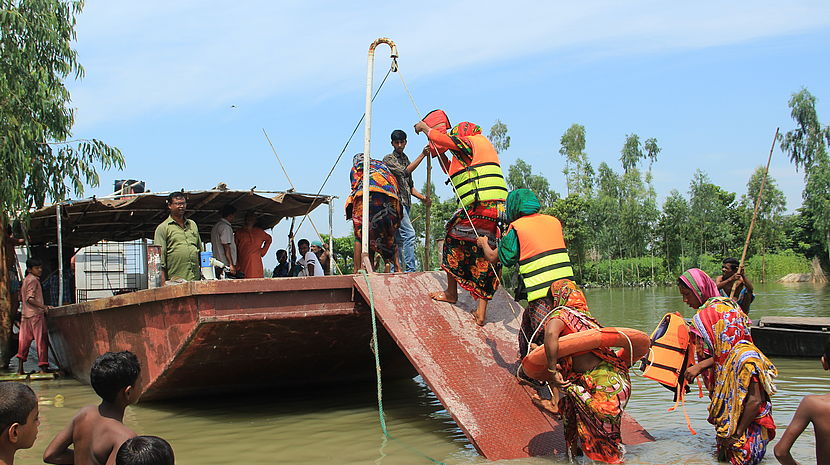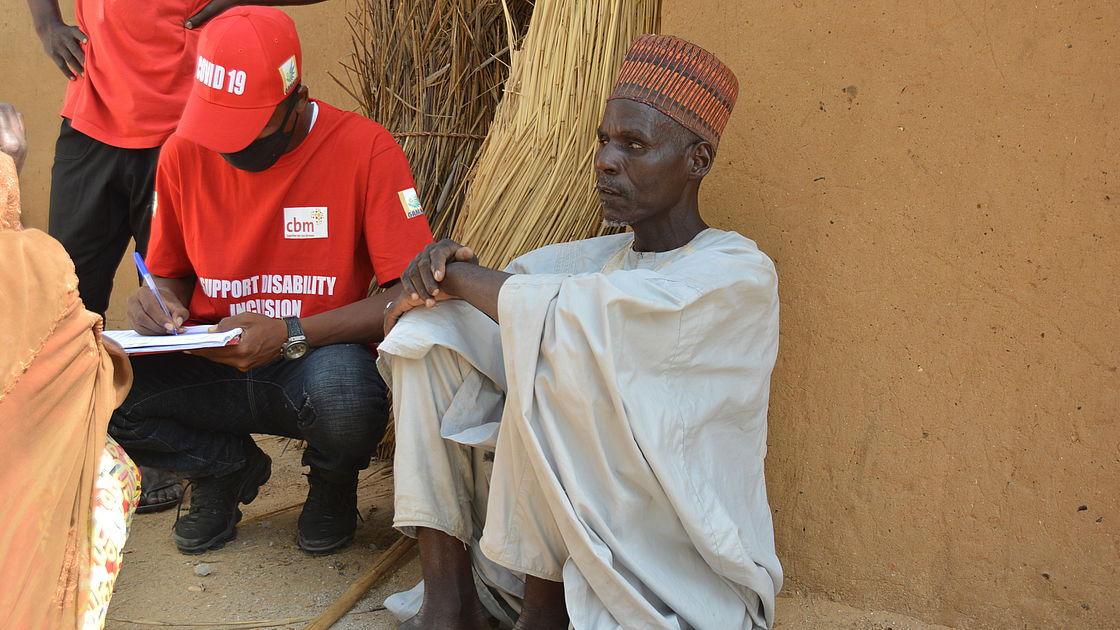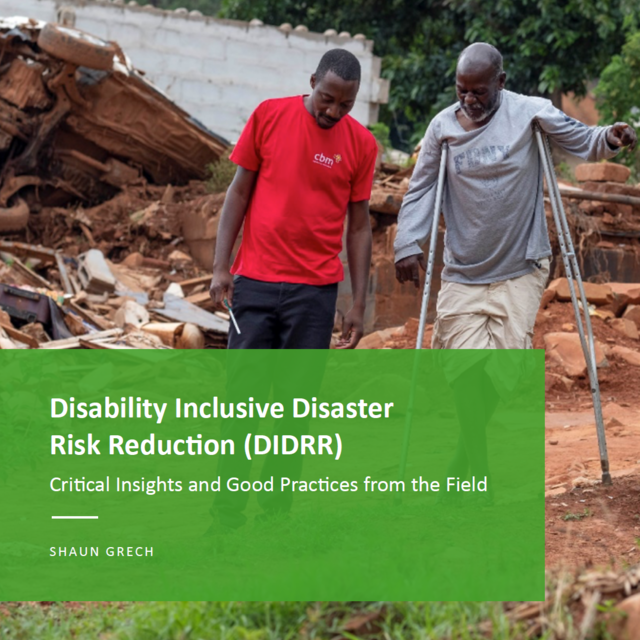Why disability inclusion matters in disasters

A special boat with a ramp for the evacuation of people with disabilities during disasters in Gaibandha, Bangladesh.
©CBM/CDD
CBM is taking active steps to ensure that its Community Based Inclusive Development (CBID) work in disaster-prone areas incorporates Disability Inclusive Disaster Risk Reduction (DiDRR) into pre-and post-disaster and long-term recovery work.
It is estimated that the 2010 earthquake in Haiti left around 200,000 people with long-term disabilities as a result of injuries. For a country prone to earthquakes, Haiti's capacity to provide emergency assistance to persons with disabilities was put to the test.
Haiti needed an emergency response plan for disasters that included persons with disabilities because they are at higher risk of injury and even death. This situation is not only seen in natural and climate disasters, but also in global health emergencies, as evidenced by the recent COVID -19 pandemic, and other humanitarian crises.
A study by CBM and the University of Cape Town, Critical Insights and Good Practices from the Field, shows that persons with disabilities are often excluded from disaster planning, preparedness, response and recovery. They do not receive timely and accessible warning signs and face problems during evacuation because of inaccessible routes and shelters or because they are turned away, leading to separation from their family. They also have difficulty finding timely medical care, medication and adequate food during and after evacuation. Their impairments worsen when they lose their medicines and supplies.
Reporting on the experiences of CBM in five at-risk countries (Haiti, Niger, Zimbabwe, the Philippines and Bangladesh), the study provides a number of good practices in Disability Inclusive Disaster Risk Reduction. These include the need to generate good, useable disaggregated data; strengthening of OPDs; informed advocacy; training on DIDRR at all levels; changing attitudes about disability; inclusive early warning systems; and effective and comprehensive mapping among others. Resilience, in particular, notably the strengthening of livelihoods to weather stresses and shocks emerged as a key theme alongside a consistent need for flexibility in planning and response to crises.
Building disaster-resilient communities is in fact one of CBM's strategic priorities in the 5-year plan of the Community Based Inclusive Development (CBID) initiative (2020-2024). CBM is taking active steps to ensure that its CBID work in disaster-prone areas incorporates Disability Inclusive Disaster Risk Reduction (DiDRR) into pre-and post-disaster and long-term recovery work.
CBM DiDRR around the world

CBM partner GAMMUN registers Persons with Disabilities in an IDP Njimtilo, Borno State, Nigeria. CBM responded to the needs of Persons with Disabilities in order to cushion them from the effect of COVID-19.
©GAMMUN/Abdullahi
CBM provides information, training and practical guidance to persons with disabilities, organisations of persons with disabilities (OPDs) and their communities in high-risk areas in Asia, Africa and Latin America.
CBM Haiti has launched an accessibility project for children. An illustrated children's book tells the story of Lea, a 7-year-old girl with tetraplegia, who regains her self-confidence by becoming aware of her rights as a person with disabilities. She demands that the environment be adapted to her needs, as required by Haitian law.
Article 11 of the Convention on the Rights of Persons with Disabilities requires states to "take all necessary measures to ensure the protection and safety of persons with disabilities in situations of risk, including armed conflict, humanitarian emergencies and natural disasters".
Following CBM training on universal design and accessible construction, 50 schools and 25 public buildings in Haiti have improved their accessibility. In addition, six risk and disaster management cells were trained on climate change risk and disaster management, as well as relief coordination.
In Bangladesh, CBM supports self-help groups to build the capacity of people with disabilities to better prepare and reduce their vulnerability to disasters. Members of the groups, together with volunteers from the Cyclone Preparedness Programme (CPP), participate in disseminating early warning messages at the community level. They work with the management of the cyclone shelters to take care of the evacuation of vulnerable persons with disabilities and ensure that they are adequately accommodated in the shelters.
The security crisis caused by the Boko Haram armed insurgency in the Diffa region of Niger often leads to massive population displacement. CBM Niger has established 21 community early warning and response systems to predict and manage crises or disasters. The team has identified and registered people with disabilities and their homes in all villages to ensure they are not forgotten or left behind.
CBM continues to train communities to consider the principles of universal access, change attitudes towards disability and develop inclusive early warning systems. People with disabilities and OPDs have increasingly taken responsibility for their own development on their own terms.

Get the full report:
Disability Inclusive Disaster Risk Reduction (DIDRR): Critical Insights and Good Practices from the Field
Download the report here